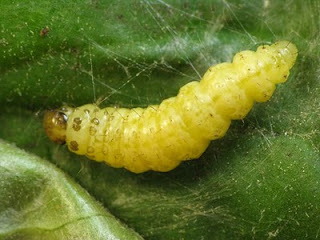 |
| Goldfinches at feeder |
But what would you think if I told you that you are probably dooming some birds to death and starvation through your gardening practices? Let us say that you decide to buy a new tree for your yard, you love the color and shape of Japanese maples and that is what you choose. Later on, you take a look at azaleas and rhododendrons and find out that there are some Chinese cultivars which you find extremely attractive. You bypass the native varieties and choose one of those.
These innocent actions have deplorable consequences for the birds that visit your yard. Birds have no use for those foreign plants. Well, you say, “I have seen them use those branches for nests, what could be wrong with such plants?”
Until just a year ago I would have thought exactly the same. I didn’t know the bad consequences of using non-native plants as long as they weren’t invasive. But reading a book by Doug Tallamy (Bringing Nature Home) opened my eyes to a whole new perspective and a new appreciation of how food chains work, not just in nature preserves and remote parks but in our own backyards.
 |
| A nutritious caterpillar feeding on native wild ginger |
So to put it in a nutshell, each time that you plant an exotic tree or shrub you are dooming some baby bird to hunger and death. Or, if it makes you feel better, each time that you plant native plants you are helping the birds you love, perhaps even more than you do with your bird feeders.
 |
| A handsome looking native shrub, mountain laurel |
For the area I am familiar with, the Atlantic seaboard:
Delaware Native Plants for Native Bees
And of course, the book mentioned above: Tallamy, Doug: Bringing Nature Home and the website: Bringing Nature Home